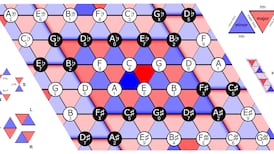SMALL PRINT:IT APPEARS that bats don't much like major roads. It might sound like an obvious reaction from the nocturnal mammals, but a study out this week claims to be one of the first to show it.
The research measured bat activity and diversity along unlit sections of the M6 motorway in Cumbria, in the North of England, which carry between 30,000 and 40,000 vehicles a day, according to a release from the University of Leeds where the researchers are based.
The project used ultrasonic detectors to record echolocation calls at various distances from the road, and it identified three main types of bat: Pipistrellus, Myotis and Nyctalus.
They found that bat activity gradually increased as the researchers got further from the road – total activity was up around threefold by a distance of 1.6 km from the roadside.
“The results were really clear cut when all other factors were taken into account, showing a very strong correlation between bat activity and diversity and distance from the road,” said researcher Anna Berthinussen.
Lead researcher Professor John Altringham suggested some reasons why. “Most species of bat fly relatively close to the ground, or close to trees and hedges, so they are reluctant to cross a wide open space such as a major road, particularly when it is occupied by heavy, fast moving traffic,” he said, adding that if the bats do try to cross, they typically do so at traffic height and there’s a risk of collision.
"This study is one of the first to show that roads have a major negative impact on bat foraging activity and diversity and is broadly applicable to insectivorous bat communities worldwide," write the study authors online in the Journal of Applied Ecologythis week.










